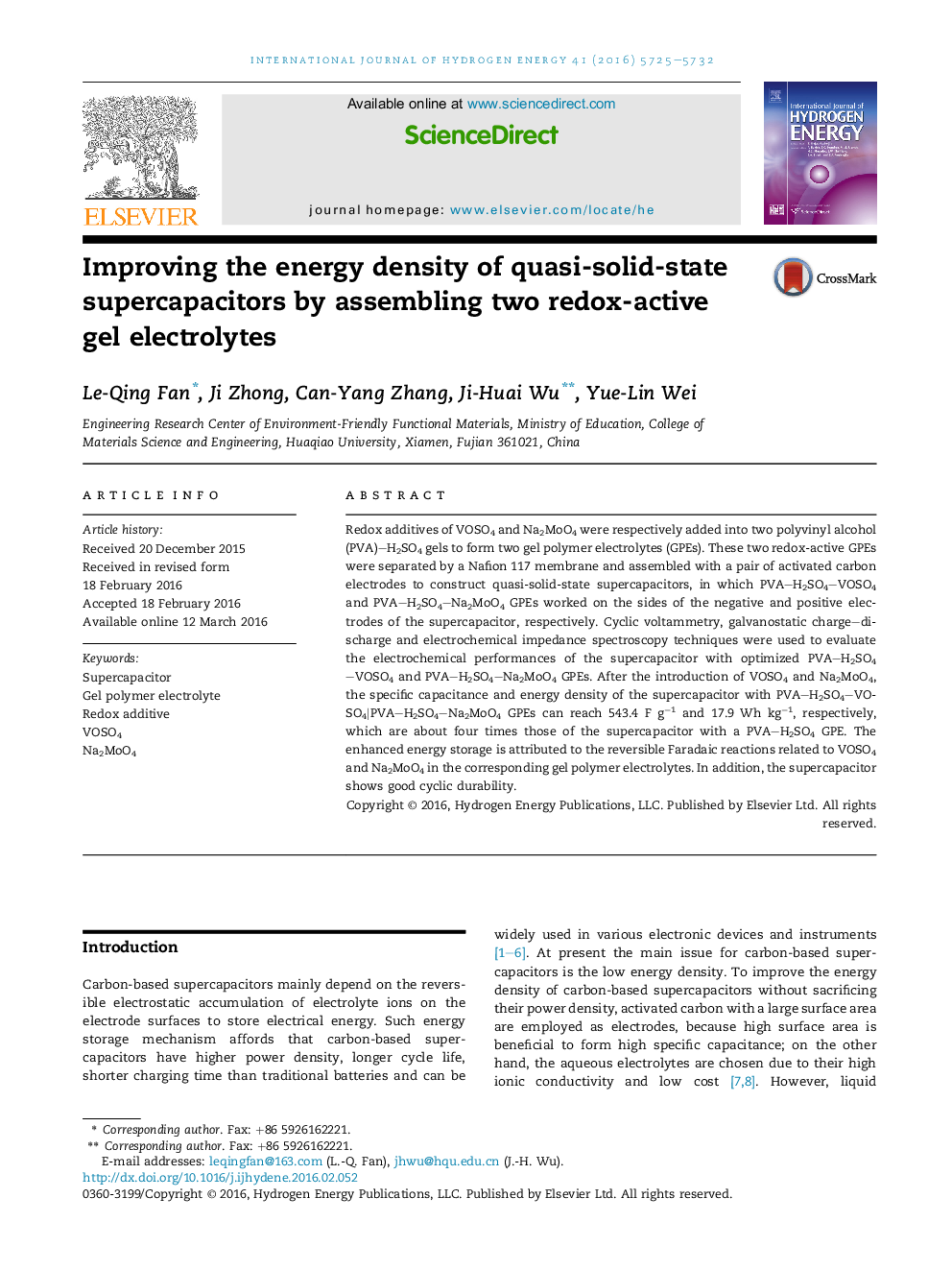| Article ID | Journal | Published Year | Pages | File Type |
|---|---|---|---|---|
| 1277685 | International Journal of Hydrogen Energy | 2016 | 8 Pages |
•VOSO4 and Na2MoO4 were respectively introduced into two PVA–H2SO4 gels.•PVA–H2SO4–VOSO4 GPE works on the side of negative electrode.•PVA–H2SO4–Na2MoO4 GPE works on the side of positive electrode.•Both VOSO4 and Na2MoO4 can produce additional pseudocapacitance in the same cell.•Supercapacitor with PVA–H2SO4–VOSO4|PVA–H2SO4–Na2MoO4 GPEs shows high energy density.
Redox additives of VOSO4 and Na2MoO4 were respectively added into two polyvinyl alcohol (PVA)–H2SO4 gels to form two gel polymer electrolytes (GPEs). These two redox-active GPEs were separated by a Nafion 117 membrane and assembled with a pair of activated carbon electrodes to construct quasi-solid-state supercapacitors, in which PVA–H2SO4–VOSO4 and PVA–H2SO4–Na2MoO4 GPEs worked on the sides of the negative and positive electrodes of the supercapacitor, respectively. Cyclic voltammetry, galvanostatic charge–discharge and electrochemical impedance spectroscopy techniques were used to evaluate the electrochemical performances of the supercapacitor with optimized PVA–H2SO4–VOSO4 and PVA–H2SO4–Na2MoO4 GPEs. After the introduction of VOSO4 and Na2MoO4, the specific capacitance and energy density of the supercapacitor with PVA–H2SO4–VOSO4|PVA–H2SO4–Na2MoO4 GPEs can reach 543.4 F g−1 and 17.9 Wh kg−1, respectively, which are about four times those of the supercapacitor with a PVA–H2SO4 GPE. The enhanced energy storage is attributed to the reversible Faradaic reactions related to VOSO4 and Na2MoO4 in the corresponding gel polymer electrolytes. In addition, the supercapacitor shows good cyclic durability.
